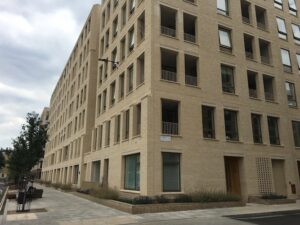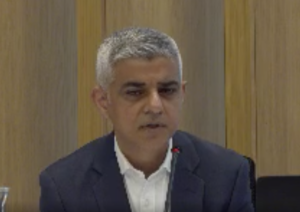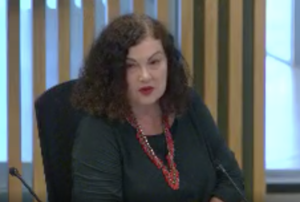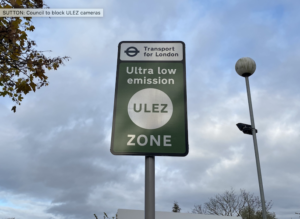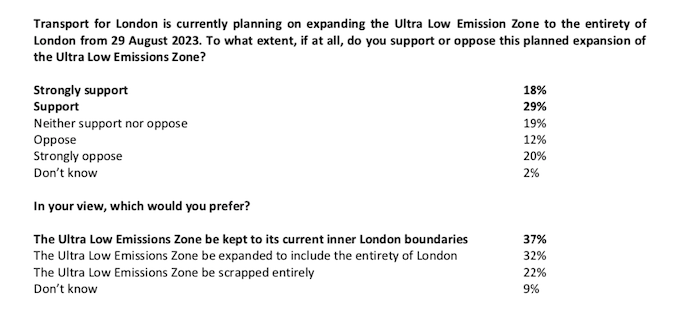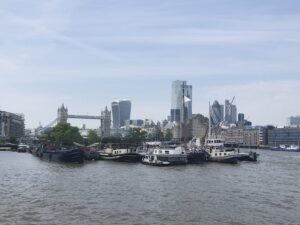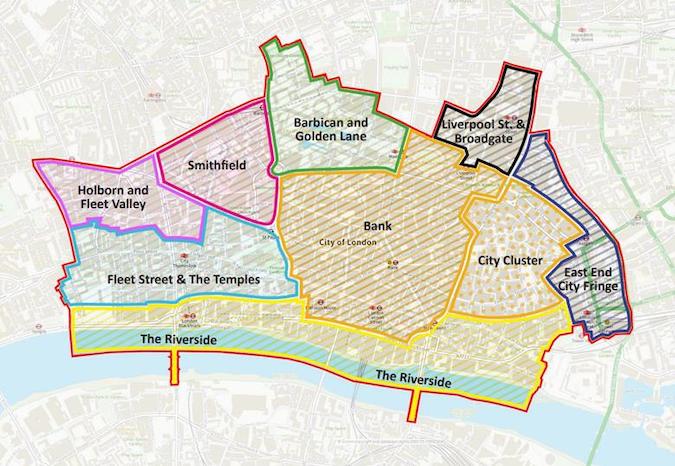It has taken me far too long to write up what was said at the recent On London event entitled London: Planning, Places & People, which took place on 15 June. Part of the problem has been that the four outstanding panelists and the highly knowledgable audience said so many interesting and insightful things I felt it would be wrong to rush compiling my account and risk failing to do justice the quality of the contributions.
Attendance was hit by a combination of superb summer weather – always an incentive for people to go to a park or a beer garden rather than be indoors – and A-Level related anxiety, which perhaps explains why most of the local sixth-formers who had registered didn’t come along. Even so, a wealth of wisdom was shared about the best ways to involve local Londoners in planning decisions that affect their lives and, collectively, the evolution of the city as a whole.
I am extremely grateful to the people who agreed to be members of the panel. They were:
- Denean Rowe, Project Manager with Planning Aid for London, which helps Londoners get to grips with the planning system.
- Mekor Newman community engagement specialist and a founding director of the Newman Francis company.
- Sem Moema, housing specialist, Hackney councillor and member of the London Assembly
- Karolina Moch, an associate with landscape architects Farrer Huxley, whose services include community engagement.
Each of the quartet set out some initial thoughts about principles and good practices that should guide community engagement.
Mekor spoke first, drawing on his and the Newman Francis company’s long experience. They’ve worked on projects from Newham to Kensington & Chelsea, from Haringey to Croydon. “One of the key principles is getting communities prepared for the change discussion,” he said, “making sure they are aware of the scope of the engagement and the opportunities.”
A starting point is to “map the community”, identifying stakeholders and areas of interest. “Our aim is to really identify what we call community intelligence – issues, concerns, aspirations, what works, what doesn’t work.” Mekor stressed the value of finding common ground, identifying major concerns that can help to get more people interested.
He emphasised the need for “an engagement process that empowers people and incentivises them to be involved” and to “be part of a discussion”. He described how six months were spent setting up a community engagement process for residents of Tottenham’s Broadwater Farm estate, which meant residents, many of them initially sceptical about council refurbishment plans, were more willing to contribute, “knowing that they had a role to play in the decision-making process”.
On the Lancaster West estate, which the Grenfell Tower formed part of, an agreement was brokered between residents and the council to ensure that residents were briefed about all impending decisions that might affect them and offered the option of being included in the related consultation and engagement processes.
Newman Francis have also had input into the Carpenters estate at the edge of the Olympic Park. Mekor said one result of this was the council’s on-site office also becoming the location of “a nursery, a toy library and an IT centre linked to a college”. Other services were set up on the estate as a result of conversations about its future, Mekor said. “What I’m suggesting is every engagement opportunity, every change opportunity, can make a difference in those communities.”
In December 2021, residents of the Carpenters voted by a large majority in favour of Newham’s latest regeneration plans, following many years of proposals that did not reach fruition. Such ballots of estate residents about their landlords’ regeneration schemes are required by Sadiq Khan as a condition of receiving funds from City Hall, which will only be allocated if the vote is in favour.
A lot of enthusiasm was expressed at the meeting for this innovation by the Mayor of London, including by Sem, his fellow Labour politician who, prior to becoming an elected representative, had worked in community engagement about housing, doing similar work to Mekor.
She was clear that “it’s a huge proposition to say to somebody, ‘I’m going to knock down your house that you’ve lived in for 30 years, please trust me’.” For her, this underlined the importance of working with residents to help them understand why such a course of action might be a good thing, “not just for them but for the community as a whole”. Yet she also observed that the very term “the community” doesn’t always adequately describe who is being spoken of.
She pointed out that London housing estate residents can range from people who have lived in their homes since not long after World War II to people who have been temporarily housed in them, albeit sometimes ending up staying for years. Such different groups of people might have very different ideas and fears about what a regeneration scheme might mean for them.
Karolina said she and Farrer Huxley, for which she has worked for ten years, firmly believe that the success of their work depends on “putting people at its heart”, with collaboration a key ingredient. This approach, she argued, brings benefits to all concerned.
“It’s a common misconception that public consultation, carried out effectively in the planning process, will slow down the programme,” she said. “This is not true. We know that good consultation will, if anything, speed it up because you will have the community’s back-up. They will be with you.”
Another frequent mistaken belief is that encouraging local input will lead to worse architecture. “But if anything, you’ll get better quality of design,” Karolina argued. “You’ll get exactly what is needed and also, if you gain the trust of the community, they will take ownership of the space and you will future proof the project.”
She gave an example of a scheme for a local authority, where much trust had been lost due to a five-year delay. However, demonstrating her point that the best consultations are “about listening as much as doing,” input from a local gardening group informed plans for planting the area, and the group ended up taking responsibility for maintaining the results.
But Karolina felt that not enough consultations are done in the best way. Sometimes her practice’s clients don’t appreciate their value. “They don’t allow enough time and budget for the consultation to be carried out successfully and it becomes meaningless – it becomes ticking boxes, an exercise which defeats the purpose,” she said. “We are often told by the client what to say or what not to say, so there’s no true dialogue.”
This is self-defeating, in Karolina’s view: “We need to work with people because we are creating spaces for them. We want them to be functional, we want them to be beautiful, we want them to be loved by them.”
For Denean, who is daily engaged with helping Londoners to navigate it, the planning system simply “isn’t designed to be accessible – it’s very difficult to get your head around”. She cited the formal Local Plans of councils in London, setting out their long-term visions for the whole of their boroughs – not only their housing, but also transport, environmental priorities, health considerations and so on – as “by far the best and easiest way to get involved with planning for your area”, but that the time available for doing so when those plans are in gestation – two junctures in the timeline, each of just six weeks – is not sufficient.
She recalled her time working for think tank Centre for London, when she would often encounter puzzlement at local level when she revealed that she had read their Local Plan. “Every time I was told, ‘Have you? Why? Really? That’s odd. Were you bored?’ Which, I suppose, is another sign of how inaccessible the system is.”
Denean also underlined the importance of boroughs providing residents with good communications about planning issues and decisions. A resident of Vauxhall, she has seen some of London’s biggest redevelopment projects unfolding very close to home. These have attracted a lot of criticism, yet they have also produced benefits for adjoining neighbourhoods in Lambeth and Wandsworth. That connection, Denean explained, is not widely recognised.
“The reason why we have the Northern line extension is pay off for a lot of the developments that have gone on in the area, and a lot of the new low-cost public facilities that we have,” she said. “I know that because I worked at a think tank, but if I hadn’t there was no way I would have. My mum would not have known that. I think that is a big issue – local government is not great at celebrating the wins or at explaining why some things aren’t possible.”
Acknowledging the pervasiveness of populist narratives about regeneration programmes, such as allegations of premeditated “social cleansing”, Denean regretted a deficit of explanations for people about why things happen that they aren’t happy with or “why we can’t please everyone”.
Panelists were asked to elaborate on why they felt estate ballots had been a big step forward and also what they thought about citizens’ assemblies – forums for residents to air ideas about the places where they live that have been eagerly taken up by some boroughs, notably Camden and Newham.
Mekor said the estate ballot requirement, which Newman Francis encouraged Mayor Khan to adopt, has made it imperative for social landlords to “put money and energy into making it happen” and “almost doubled” the level of participation from residents.
Sem observed that anti-estate regeneration campaigning has often insisted, incorrectly in her view, that “the thinking behind it is to gentrify, which it is not”. Even with ballots, a mix of anti-politics politics and Nimbyism can work to undermine trust, making it difficult to have a conversation with people about addressing problems with damp and mould that can literally permeate every part of a building. “Trying to win the trust of people and convincing them there isn’t an ulterior motive is half the battle,” she said. “I think the same applies to citizens’ assemblies”.
She added that she is “really a big fan of YIMBYs [people who Yes In My Back Yard],” and, in line with that, approved of the straightforwardness required by the ballot proposition: “The whole point of a ballot is that somebody, your landowner, says, ‘I want to knock down your house and this is what I want to do next’. The assumption is that they will get it, but they will only get it if they can, first of all, convince tenants. And in order to convince tenants and leaseholders, they need to promise, written in blood, the things they are going to deliver for that.”
One audience member, a community activist and resident of Soho, said he has been encouraged by the progress of the Labour administration elected to run Westminster City Council last year, the first time in its history it had been taken out of Conservative control. It had shown that it understands “estates other than Belgravia” he said, and has not responded to pushbacks against decisions it has taken by “just churning out propaganda. They give reasons and explanations for what they’ve done”.
We also heard from a woman from a major property development firm, who strongly endorsed points made by panelists that some in her business “tend to think of communities as not being very intelligent and therefore not really able to understand the nuance, the complexities of viability and so on”. By avoiding having conversations with residents about such matters, “we tend to remove ourselves,” she said. “Yet doing it well can be absolutely in the interests of developers too. When you have open and transparent and meaningful conversations with people, you find that they are able to understand and appreciate.”
Challenged to come up with examples of estate residents’ input and landlord flexibility producing tangible changes, Denean offered the example of the Bell’s Garden estate in Southwark, where initial plans to increase the housing density through in-fill – an approach often championed as an alternative to demolition and re-build – had been opposed by residents. This had resulted in a higher degree of affordability in the new homes (83 for social rent) and lower building heights, along with the re-provision of a play area for children and a community centre.
Other contributions from the audience, most of them supporters of On London, included an expression of confidence that the planning system overall as it stands “can and does work” as long as councils get to grips with the hard maths of viability and take seriously their responsibility to represent the concerns of electors.
A woman from a prominent public affairs company said she and colleagues “are increasingly working with developers who take a real interest in social value and in genuine community engagement”. She also sought opinions about how best to connect with “people who aren’t engaged” such as private sector tenants who might not have lived in an area for long and can’t be sure they will live there for much longer. They might not feel they have much of a stake in a neighbourhood’s future, yet potentially they could have.
There was considerable praise for good borough councillors who know the people of their wards well and can provide important insights to facilitators, landlords, council officers and developers alike. There were several questions about what constitutes a community and the most effective ways to hear a full and wide range of views, not simply those with the loudest voices and, perhaps, Nimby-ish or ideological agendas. Where did schools fit in, for example? What about places of worship and their congregations? Such institutions were held up as providing important contexts, both as politically-neutral venues and as amenable social settings, for finding out what local people want and why.
An activist and organiser from Kingston, speaking of the “hard-to-reach”, said they are often intimidated by others who “self-define as the community”. Also, she said, the very word “planning” is narrowly-defined, making people think of Town Hall bureaucrats and unprepossessing laminated leaflets attached to lamp posts. “The reality is that planning affects all of our lives – our environment, our health and our education,” she argued. The way to get people to care about it is to ask them about the provision they’d like to see in those areas, or about trees, or the arts or sport.
There was so much more I could report, but 2,500 words is probably enough to be going on with. All of the above, plus a lot of what I’ve left out have given me, and I hope readers, an enormous amount of food for thought.
With a mayoral election coming, London still recovering from the pandemic, and much rethinking going on about the types of homes, offices, streets and public spaces the city needs in the post-Covid, the wealth of ideas and issues aired and discussed in the first floor event space above my local corner shop should be at the very heart of the debate about our city’s future.
Let’s try to put them there, starting today.
Photograph: The panel and the chair prepare to start. Left to right: Mekor Newman, Denean Rowe, Sem Moema, Karolina Moch, Dave Hill.
Follow On London on Twitter. If you are not already a supporter of the website and its writers, please become one by donating £5 a month or £50 a year using any of the “donate” buttons. Alternatively, email davehillonlondon@gmail.com and ask for bank account details. Thanks.


